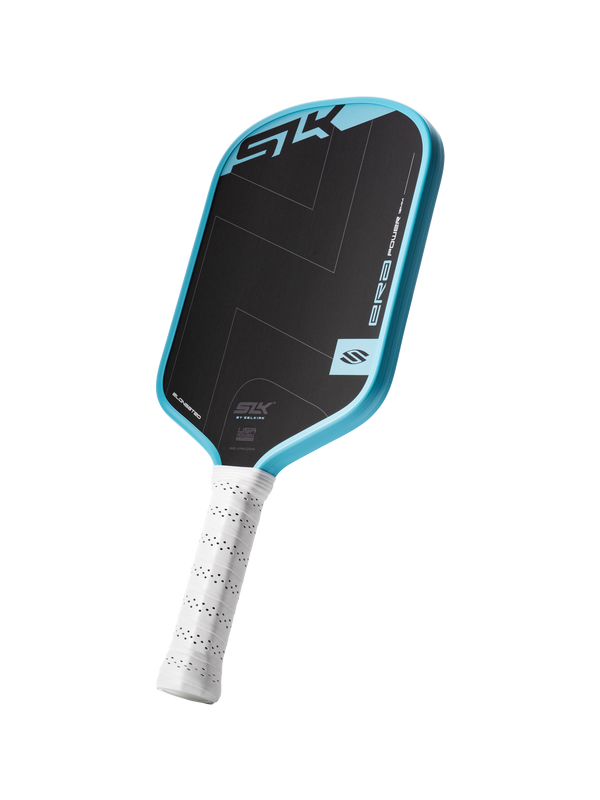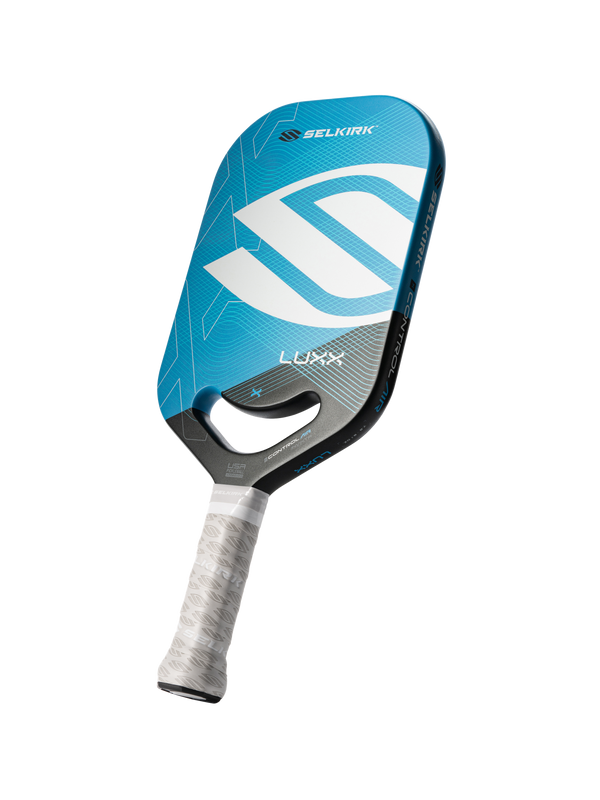
Trying to be a serious Pickleballer without a strong core is like building a house on a foundation of sand. The player will generally hold up until the level of competition or training overwhelms the unfit or unstable core. Adequate core strength greatly assists the player in maintaining the proper ready position, knees bent while back on the heels. A complete and balanced training program for serious participants must include adequate core training, in addition to flexibility, strength and cross training. The core muscles are critical for maintaining the dynamic stability of the entire body, and helps to prevent lower back pain. Playing Pickleball relies on core strength, but unfortunately doesn’t build it. No human movement can occur without the core muscles being engaged.
When most people refer to the core, they mistakenly only consider the groups of muscles making up the abdominal wall. While the abdominal muscles are critical and do make up a significant portion of the core, other muscles include the deeper stabilizing muscles around the hip, pelvis and lumbar vertebrae. The abdominal wall is made up of a number of muscles including:
- External obliques
- Internal obliques
- Tranversus abdominis
- Rectus abdominis

The external abdominal muscles
The abdominal wall is similar to a radial tire, in that they both get their strength and resilience from several layers of fibers running in different directions. The Transversus abdominals is the deepest muscle group running horizontally from front to back. The next deepest group of muscles the internal obliques, begin from the side of the hip crest and runs in a down and out direction. The internal obliques are used to compress the abdominal wall for respiration. The opposite of the internal obliques, the external obliques are more superficial and they run downward and inward. The external obliques are the largest and strongest abdominal muscles. Together the external and internal obliques make up the “love handle muscles”. The rectus abdominals are the most superficial abdominal muscle group and they make up the “six pack abs”. The abdominal muscles work posturally by contracting and can twist, flex or extend the spine. In addition, compression of the abdominal muscles increases internal pressure within the thorax and abdomen. This increase in internal pressure is critical for defecation, childbirth, urination, vomiting and forced expiration.
The muscles stabilizing the lumbar vertebrae include the multifidus, erector spinae and the quadratus lumborum. These muscles run along the spinal column and have a function similar to guide wires that hold up a large tower or antenna. The multifidus are deep smaller muscles that attach from vertebrae to vertebrae. The quadratus lumborum muscles are also deep and they run underneath the superficial erector spinae group.
Muscles of the lower back
In addition to the core being comprised of the abdominal and spinal muscles it also includes the adductor, abductor and quadriceps muscles, gluteals, iliopsoas and hamstrings.
Striving to have washboard or six pack abdominal muscles can cause instability, injury, muscle imbalance and lower back pain. It is important to spend equal amounts of time training and strengthening the lower back muscles as you do the muscles of the abdomen.
There are many exercises and a wide assortment of exercise equipment that can be used for strengthening the core. In addition, most of this equipment is inexpensive, readily available and easy to use. Pilates exercise programs, yoga and core strengthening classes at health clubs are also excellent ways to develop core strength. Some of the best products for assisting in core strength development include:
- Medicine Balls
- Stability Balls (Swiss Balls)
- Balance products; Bosu Ball, Wobble boards and balance boards
- Dumbbells
- Roman Chair
A stability ball is not only inexpensive, easy to use and readily available but it also improves balance, coordination and strengthens those hard to get to muscles. To ensure that the correct size stability ball is used, sit on top of the ball with the feet hip width apart. The knees should be level with the hips, and a 90-degree angle should be formed at the knee joint between the legs and thighs. Based on height, the following stability ball sizes are recommended:
- 4’ 11”- 5’ 3” you should be using a 55cm ball
- 5’ 4”-5’ 10” you should be using a 65cm ball
- 5’11” and up you should be using a 75 cm ball

A perfect size stability ball, I am 6’1” and use a 75 cm ball
One novel approach to core strengthening and overall conditioning is to use a stability ball as your chair. In addition to increasing core strength and stability, the use of a ball for a chair improves balance, forces proper spinal alignment, improves circulation, causes frequent position changes, burns up to 350 calories/day and is much cheaper than a conventional chair.
Prior to beginning core strengthening exercises, you should stretch and perform a light warm up routine. Starting cold can result in injury and a less effective workout. For maximum effectiveness core training should be done at least two to three times/ week.
Fernando Fit Pro provides a number of great exercises and stretches on Selkirk TV including this core strengthening exercises:
We will begin the core training with simple floor exercises that require no additional equipment.


Trunk or abdominal curl: (rectus abdominus, obliques) Lie on your back with your hips and knees flexed. Your heels should be approximately 12-18 inches from the buttocks. Do not wedge your feet under a bed, sofa or other structure, this challenges the hip flexors rather than the abdominal muscles. Place your hands on the opposite shoulders and raise your head, shoulders and arms while curling your trunk so that the angle of the spine to the floor is approximately 45 degrees. Do three sets of 12-15 repetitions. For additional variety and to recruit the oblique muscles, twist to the side as you rise up. Another variation to recruit additional abdominal muscles while performing this exercise is to place the legs and feet over a bed, chair or stability ball. For additional resistance place a weight over the chest while performing curls.


Scissors: (rectus abdominus) Lie on your back with your arms and legs full extended, with your hands and feet touching. Slowly bring your arms and legs straight up at the same time so they meet directly above your torso. Slowly lower your arms and legs to the starting position and repeat 12-15 time for three sets.

Bird Dog (opposite arm and leg raise): (lower back, erector spinae, hamstrings, gluteals)Start on your hands and knees with the back flat. Raise your right leg and left arm so they are parallel to the floor and hold for 15-30 seconds. The supporting arm should be perpendicular to the floor. Repeat 5 times and do three sets. As your core strength and balance improve try to hold this position for a minute or longer.

The Trunk and Leg Raise: (erector spinae muscles) Lie on your stomach with your hands behind the head and neck. Raise the head, shoulders and legs slowly and hold for a few seconds. Repeat 12-15 times. For additional resistance hold a small weight behind the head.

Side lying hip abduction: (hip abductors, gluteals, obliques) lie on your left side with the right arm full extended and the right leg straight and directly above the left. Roll the right shoulder forward and place the right hand on the ground. Lift the right leg up slowly and repeat 25-30 times, do 2-3 sets
Exercise Ball Workouts:

Leg Extension: (rectus abdominus and quadriceps) Lie with the ball in the middle of your back, extend one leg straight out and hold for 15 seconds. Do the opposite leg and repeat 10-12 times for 2 sets. For additional resistance increase the hold time to 30 seconds.

Back extension: (lower back muscles, erector spinae) lie with your hips and lower torso on the ball, your knees straight or slightly bent and your hands behind the head. Slowly raise your shoulders and arch your back until your body is in a straight line. Repeat 10-12 times and do two sets. For additional resistance hold a small weight behind the head.

Hip Extension: (lower back, hamstrings, gluteals) Lying with your hips and stomach over the stability ball place both hands on the floor under the shoulders and extend each leg for 15 seconds. Do 15 repetitions with each leg for three sets. For additional resistance hold for 30 seconds.

Crunch: (Rectus abdominis) start with the stability ball under your lower back and buttocks with the upper body fully extended and the feet flat on the ground. Slowly flex the upper body until the arms are pointing straight up. Do 25-30 repetitions with three sets. For additional resistance hold a weight or medicine ball in your hands.
About the Author:
Alan Bragman is a chiropractor living in Atlanta, Georgia. He is a IPTPA level 2 certified coach. He was on the medical advisory board at Bicycling Magazine for 10 years and has written for USA Pickleball Magazine and numerous other sports publications.
Disclaimer: The medical advice, views, and opinions expressed herein are those of the authors and contributors, and do not necessarily reflect those of Selkirk Sport or its affiliates. Selkirk Sport does not endorse, warrant, and/or assume any legal liability or responsibility for the accuracy, completeness, or usefulness of any information, apparatus, product, or process discussed. Specific medical advice should be discussed and reviewed with a qualified physician.























